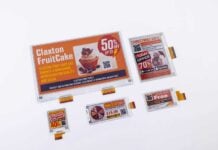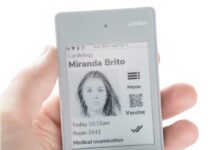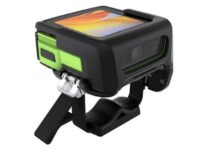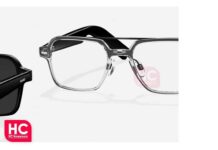The use of solar power in Wearable Technologies products has been a hot topic for many years and, at present, there are a number of great solar-powered products in the marketplace.
These include, for instance, solar bags and backpacks that feature very cleverly integrated solar modules. One such product is the solar-panel studded handbag, a cooperative effort by Forster Rohner, Alexandra Institute and Diffus Design. Even at low daily exposure to sunlight, the bag can produce enough energy (2 Watts) to charge a cell phone. Noon Solar offers a small variety of handbags and satchels with integrated solar panels. Each bag requires about six to eight hours of full sunlight to be fully charged, at which time the bag will provide enough energy to charge mobile devices for a number of days — and nights, too. And even fashion design giant Ralph Lauren is getting in on the solar action. The collection RLX features a solar backpack that can produce up to 3.45 Watts of power, which is enough energy to fully charge an iPhone or an iPod in two to three hours. Further bag models come from the taiwan-based Solarfocus technology co. Ltd, sundload, stromwerk, GOODHOPE BAGS, Eclipse Solar Gear, SOLARC, Solare fashion and last but not least the SolarShopper.
Solar power is also integrated into clothing these days. TexRay’s AIQ Smart Clothing includes a wearable solar panel called SolarMan that can generate power for portable devices. Solar vests are also a highlight in the marketplace, for instance the Solar ScotteVest and one by Chinavision. Gathergy offers a solar-powered jacket for personal thermal comfort. Even the British military has begun to integrate solar cells into its uniforms. The years 2006 and 2007 were all about the design of solar swim wear. Two such designs are a solar swimsuit by Triumph International and Conergy and a solar bikini, designed by Andrew Schneider. Another interesting wearable design idea is the brainchild of designer duo Hyun-Joong Kim and Kwang-Seok Jeong. They’ve come up with a stylish, solar-paneled pair of sunglasses that can charge mobile devices.
These days, there is a huge variety of small, portable solar chargers for mobile devices on the market. Products that can be hooked up to mobile devices include the outdoor chargers by Freeloader and HiNation, fan-type models by KiwiChoice, SOLIO and ambienTech, the portable solar modules by DEVOTEC industries, powertraveller, Forsera and MINIWIZ, the iPhone solar charger modules by A-solar and Oyama, and the solar strap by Suntrica. OFFGRID and Voltaic offer small, solar cell-studded bags, in which small mobile devices and their accessories can be stored.
Other manufacturers offer pluggable cases with solar cells, like these sleeve-style ones for iPhones and other smartphones by Novothink and Mi Suny.
And then there are the companies that go the extra mile and integrate the solar cells right into the mobile device. Sporting goods manufacturer Puma does just that in its Pumaphone as do Samsung and Umeox.
Over the years, solar modules have advanced dramatically in size and efficiency, there are solar cells on the market that already reach 23% efficiency and it is expected for this trend to continue. Because energy supply is an essential part of Wearable Technologies product development, and because it is optimal when the wearer has as little to bother with as possible, solar energy has become a technology that should be considered as a possible solution. Future developments will be influenced by topics like organic photovoltaic solutions and light harvesting yarns.
















